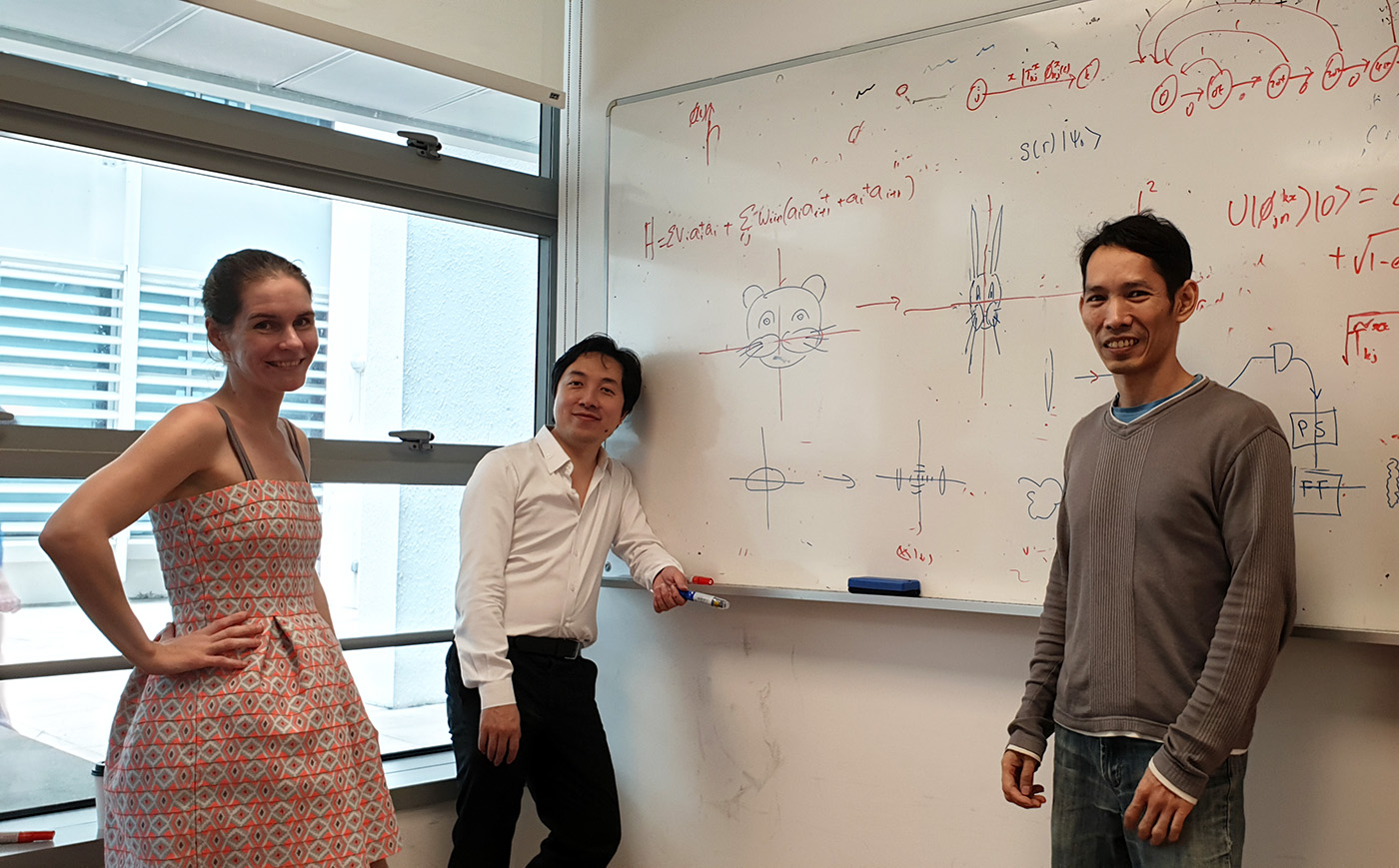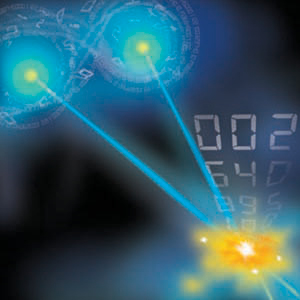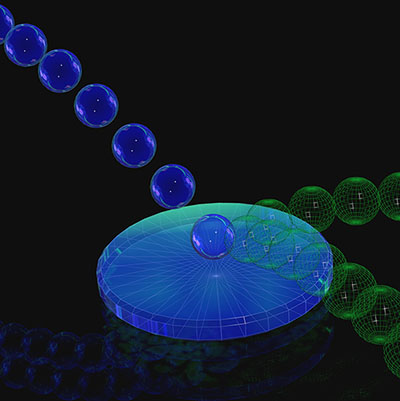Highlights
More squeezing, less effort
 CQT researchers (pictured from left to right) Jayne Thompson, Mile Gu and alumnus Syed Assad and their collaboratores describe a new light squeezing technique in the journal Nature Photonics.
CQT researchers (pictured from left to right) Jayne Thompson, Mile Gu and alumnus Syed Assad and their collaboratores describe a new light squeezing technique in the journal Nature Photonics.
An international team including CQT researchers has developed a technology that more efficiently ‘squeezes’ quantum states of light. Squeezing can allow more powerful application of light in technologies such as quantum computing and quantum-enhanced sensing.
The scheme is described in an 18 February paper in the journal Nature Photonics.
CQT’s Jayne Thompson and Mile Gu did the work with experimentalists at the Centre of Excellence for Quantum Computation and Communication Technology at the Australian National University (ANU) and a colleague at Shanxi University in China.
The experimental team leader of the project is Syed Assad, who completed his PhD in quantum information at the National University of Singapore in 2010. Assad was previously at ANU, and has recently moved to Singapore to work with Mile at NTU as part Mile's National Research Foundation fellowship project on quantum advantage in modelling and simulation of complex systems.
Quietening the noise
The concept of squeezing has its roots in the quantum uncertainty principle, which holds that it’s impossible to exactly fix certain pairs of properties. This most famously applies to position and momentum of particles. It also applies to properties of electromagnetic waves.
It’s not a phenomenon that matters for bright light, but for quantum information scientists working with a few light particles at a time, the uncertainty shows up as a fundamental noise.
"Even in an empty, dark room, there is still noise in the form of energy that permeates all space,” explains ANU’s Ping Koy Lam.
This ‘vacuum noise’ imposes a limit on how finely quantum states can be manipulated. Squeezing reduces the noise in one property of the light, such as phase, by moving it into another, such as amplitude. Reducing noise is analogous to lowering the state’s temperature, creating a system where the temperature difference can then drive work.
Jayne says, “From certain viewpoints, such states also appear to have temperatures below that of absolute zero and, as such, they can also act like a power resource for information processing at the quantum scale.”
The ANU team has been working on squeezed light for more than two decades. One big success of the technique has been in the detection of gravitational waves by the US-based LIGO instrument, which monitors for disturbances in squeezed light caused by the ripples in spacetime.
That’s an example of squeezed light’s application in sensing. Squeezing light will also allow denser encoding of quantum information for computing tasks.
A chance of success
Mile and Assad, already collaborators on previous work, first began talking about the idea behind this new paper when they met up in 2016 at the 25th Annual International Laser Physics Workshop held in the Republic of Armenia.
The team’s approach offers improved performance over standard schemes for squeezing. Although a vacuum state is relatively easy to squeeze, conventional attempts to squeeze other states introduce noise. Assad notes that conventional approaches for an in-line squeezing gate always require a lot of non-classical resources, and the heavy reliance on resources ultimately limits their performance.
He says, “Instead of directly squeezing the actual state, this machine works by first squeezing the vacuum state and then using this as a resource to squeeze the actual state. In other words, we are kind of transferring the squeezing from the “vaccum state” to the actual state. We can make this transfer noise-free, but at the expense of a higher failure rate.”
The trade-off is that the scheme is probabilistic, meaning it doesn’t always work. Their experimental apparatus will squeeze any incoming state, but how likely it is to work depends on how precise you need it to be. Asking for higher fidelity means less chance of success. However, the setup gives a signal when the squeezing gate has worked. This heralding means it could still be useful in numerous quantum information processing applications.
“We were able to beat all previous limits in doing this protocol by sacrificing determinism. We have something that heralds it that says did it succeed, or did it not succeed. By having this failure rate, it’s kind of like we concentrated the resource so the times we succeed we can do a lot better,” says Mile.
ANU’s Sophie Zhao, the paper’s lead author, says that when the gate works, “it can efficiently squeeze many quantum states to a level that was once thought to be unachievable". She recently presented the team’s results at the “Rising Star of Light” competition organized by Springer Nature, where it was awarded first place.








